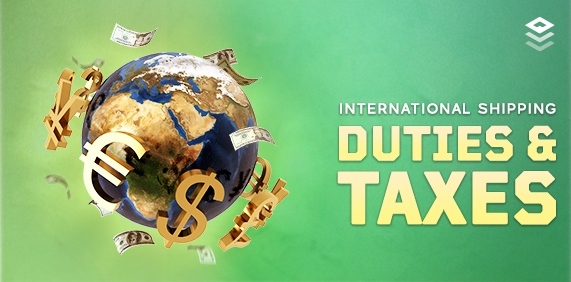
Shipping packages from the United States to other countries has never been a simple process. Over the years, we’ve learned that what seems like a straightforward task, boxing up a few items and sending them overseas, can quickly become an exercise in patience, persistence, and sometimes, pure luck. For travelers like us who live a nomadic life, moving from country to country, the challenge of receiving or sending a package can feel like navigating a maze filled with hidden fees, lengthy delays, and unpredictable customs rules.
One of the first hurdles comes long before the box even leaves American soil: the cost. International shipping prices have soared in recent years, making it shockingly expensive to send even a small parcel abroad. A lightweight box that might cost $30 to ship domestically can easily increase to US $200 or more once an overseas destination is added to the equation. Add insurance, tracking, or faster delivery, and the total can rival the value of what’s inside the package. For digital nomads, expats, and long-term travelers, that price tag makes us think twice before sending anything at all.
Then comes the paperwork, those seemingly endless customs forms that require detailed descriptions of items, their values, and intended uses. It might not sound so bad until you realize how specific you have to be. Listing something too vaguely, like “gift,” often triggers suspicion at customs. But list something too precisely, say, “prescription vitamins” or “lithium battery camera equipment,” and you might open the door to confiscation, extra taxes, or even outright refusal of entry, as we experienced in the recent DHL refusal of Tom’s hearing aid charger. Every country has its own rules, and they change without warning. What passed through last month might get stopped next time for no clear reason.
Customs clearance itself is a bit like waiting for the weather to change. It could take days or weeks. Packages often sit in limbo, “awaiting inspection,” while both sender and recipient anxiously refresh tracking pages that seem frozen in time. Sometimes, items that were carefully declared and legally shipped never arrive at all. They vanish into the mysterious void of “lost international mail,” a term we’ve learned to dread. Attempting to file a claim with a courier company often results in a bureaucratic dead end. Each side blames the other. The US carrier blames the destination country, while the foreign postal service insists it never arrived.
For those of us who are always on the move, timing becomes another major obstacle. Since we rarely stay in one place for long, coordinating a delivery can feel like a game of chance. Even express options, like DHL, UPS, and FedEx International, are not foolproof. A promised “three to five business days” can easily stretch to ten or more if customs decides to take a closer look. And unlike domestic shipping, where you can redirect a package mid-route or pick it up at a nearby office, international parcels often can’t be rerouted once they’ve crossed a border.
Another frustrating factor is import taxes and duties. Many countries charge high fees on incoming packages, even when they’re clearly marked as gifts. We once received a small box of personal items sent from the US, containing nothing fancy, just vitamins, a few pieces of clothing, and a pair of shoes. We were shocked when customs in Europe charged nearly US $300 in import duties. The irony was that the contents weren’t worth much more than that. These surprise fees can make receiving mail abroad both unpredictable and costly, turning what should be a joyful experience into an expensive ordeal.
Certain items are especially difficult to ship. Anything containing lithium batteries, as has been the case with Tom’s hearing aid charger, electronics, or supplements, tends to raise red flags. Medications are nearly impossible to send, even if prescribed. Food items, liquids, and anything perishable are typically restricted as well. We’ve learned the hard way that what’s perfectly legal in the U.S. might be considered contraband elsewhere. It’s not unusual for customs to seize an item, claiming it violates import regulations, even when it’s something as innocent as over-the-counter vitamins or protein powder.
Many travelers turn to mail forwarding services, as we have with Maillinkplus.com, hoping for a smoother experience. These companies receive packages in the US and then ship them abroad once all items are consolidated. While convenient in theory, they come with their own complications. Forwarders charge handling fees, and sometimes they repackage items to reduce size or weight, which can cause problems with customs if item declarations don’t match perfectly. Still, for those of us without a permanent home address, they can be a lifeline.
Technology has helped somewhat. Tracking systems are now more sophisticated, allowing you to track a package’s journey across the globe. However, tracking doesn’t make the process faster or more reliable. It simply provides a clearer view of where things are stuck. It’s both comforting and maddening to watch a parcel sit in “customs processing” for a week with no updates.
The emotional aspect shouldn’t be overlooked either. When you live abroad, packages from your home country carry more than just objects. They carry connection. A care package from a friend, a birthday gift, or even a replacement for something lost in travel can mean the world. So when that box disappears, or arrives months later battered and partially opened, it’s hard not to feel a little deflated. It’s a reminder of how small yet complicated our world can be, and how easily a simple gesture can become entangled in bureaucratic red tape.
Ultimately, we’ve learned to adapt. We pack light, buy locally whenever possible, and avoid shipping anything we can live without. When we do need to send or receive something, we brace for the process, hoping for the best but preparing for the worst. International shipping, like much of long-term travel, teaches patience and flexibility. It’s a dance between convenience and chaos, between the modern world’s promise of connection and its many practical limits.
For now, we accept it as part of the adventure, just another challenge on the long road of life abroad, reminding us that even in an age of global connectivity, distance still has a way of humbling us.
This morning, we received a notice from UPS, when the package arrived in Barcelona, we had to pay a customs fee of US $38.93. We couldn’t pay it quickly enough, hoping the charger wouldn’t be delayed further. It was expected to arrive yesterday, but now it is delayed until tomorrow. We shall see how it goes.
Be well.
Photo from ten years ago today, October 8, 2015:







